
Deutsch-Chinesische Enzyklopädie, 德汉百科
 Austria
Austria






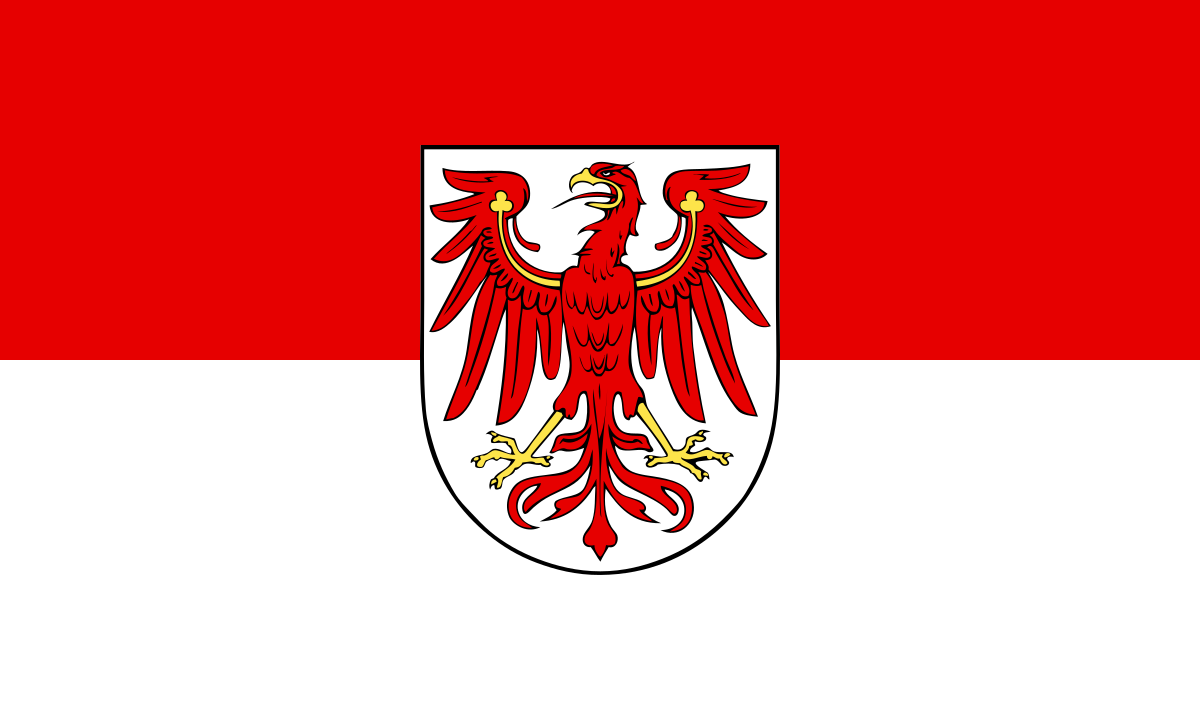 Brandenburg
Brandenburg
 Germany
Germany
 Elbe
Elbe

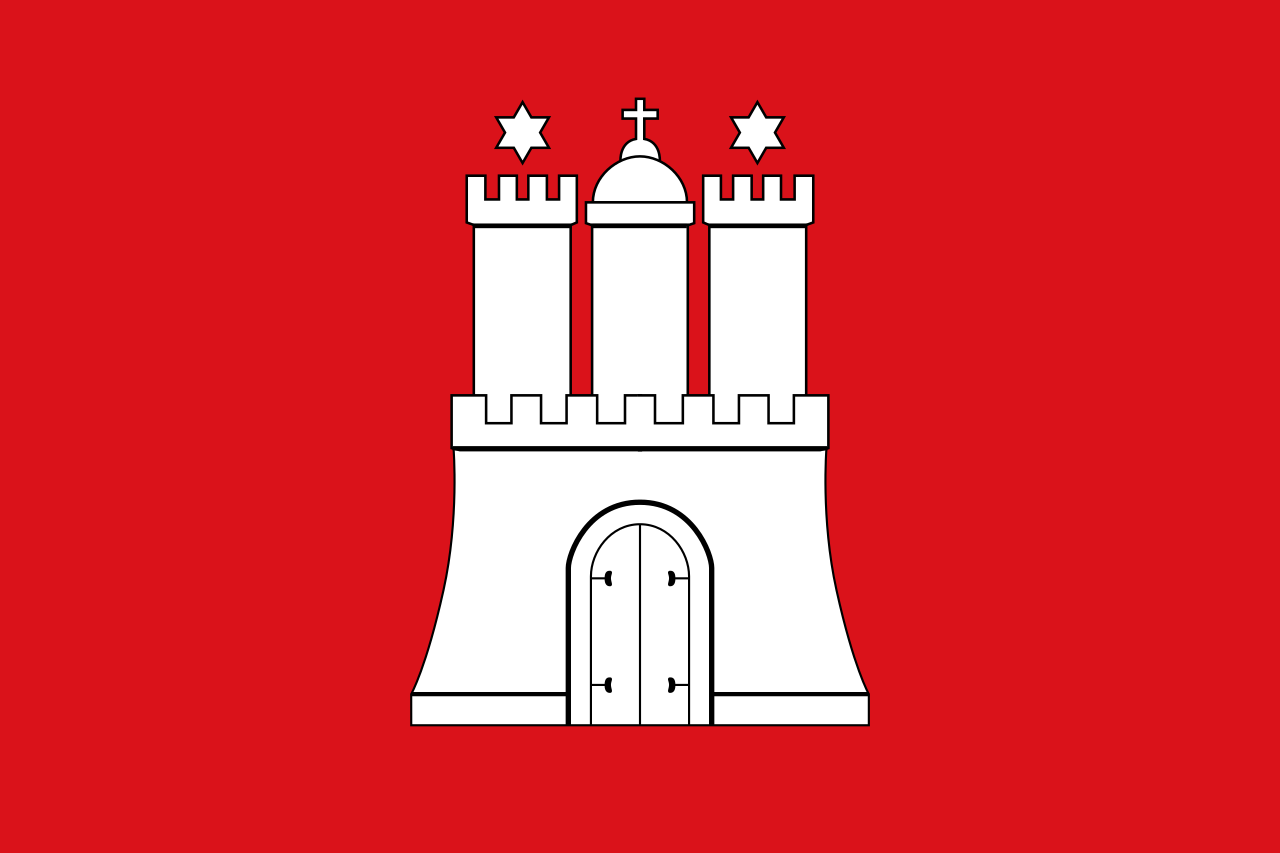 Hamburg
Hamburg

 Mecklenburg-Vorpommern
Mecklenburg-Vorpommern
 Vltava
Vltava

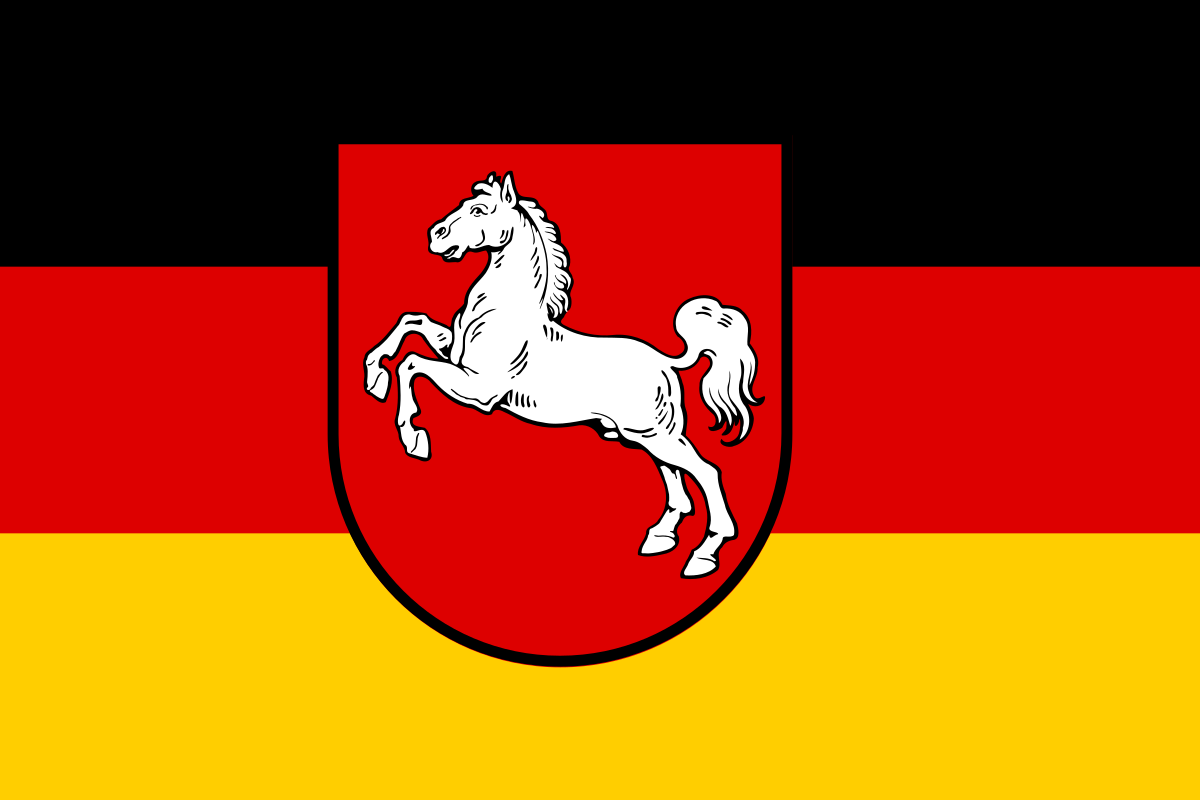 Lower Saxony
Lower Saxony
 Kiel Canal
Kiel Canal
 Austria
Austria
 Poland
Poland

 Saxony
Saxony

 Saxony-Anhalt
Saxony-Anhalt

 Schleswig-Holstein
Schleswig-Holstein
 Czech Republic
Czech Republic

 Vacation and Travel
Vacation and Travel
易北河发源于捷克和波兰交接的苏台德山脉,向南进入捷克,再流成一个弧形转向西北流入德国,经汉堡流入北海。
易北河(德语:Elbe)在捷克语和波兰语中称为“拉贝河”(Labe,Łaba),都是由古斯堪的纳维亚语的“河流”一词演变来的。易北河发源于捷克和波兰交接的苏台德山脉,向南进入捷克,再流成一个弧形转向西北流入德国,经汉堡流入北海,是中欧地区的主要航运河道。
易北河从河源到德国的德累斯顿为上游,在山地中河流湍急,由许多小支流汇合而成,在接近德捷边境时河宽达140米,然后穿越一个狭窄的峡谷进入德国的平原地区。河宽达430米,到了汉堡以下为下游,河流宽达14.5公里,海轮可以经过宽阔的河道航行109公里直接到达汉堡,通过中德运河向西到达鲁尔工业区,向东到达柏林。700吨的货轮可以上溯到捷克,较小的船可以经由其支流到达布拉格。
易北河的年平均流量变化较大,1926年到1965年期间,最大流量达3617秒立方米,最小只有145秒立方米,因此给航运带来一定的不利影响。由于下游水位低,海潮可以直接到达汉堡,当有风暴时,洪水可以淹没汉堡部分市区。易北河的沿岸分布着许多欧洲重要的城市。
Die (niederdeutsch Elv, tschechisch Labe, lateinisch Albis) ist ein mitteleuropäischer Strom, der in Tschechien entspringt, durch Deutschland fließt und in die Nordsee mündet. Sie ist der einzige Fluss, der das von Mittelgebirgen umschlossene Böhmen zur Nordsee hin entwässert. Zu den bekanntesten Gewässern ihres Einzugsgebietes gehören die Moldau, die Saale, die Havel mit der Spree und die Elde mit der Müritz. Im Oberlauf durch die Mittelgebirge geprägt, folgt sie im weiteren Verlauf zwei Urstromtälern des Norddeutschen Tieflandes.
Gemessen an der Größe ihres Einzugsgebietes von 148.300 km² liegt sie für Mitteleuropa gemäß Liste der Flüsse in Europa an vierter Stelle hinter der Donau, der Weichsel und dem Rhein, gefolgt von Oder und Memel.[6]
エルベ川(エルベがわ、ポーランド語: Łaba、チェコ語: Labe、ドイツ語: Die Elbe、低ザクセン語: De Elv)は、チェコ北部およびドイツ東部を流れ北海へと注ぐ国際河川である。全長約1,091kmはヨーロッパでは14番目に長く、このうち727kmがドイツ国内を占める。
ポーランド、チェコ国境地帯のズデーテン山地に源を発し、チェコ北部、ドイツ東部を北へ流れ、ハンブルク付近で北海に注ぐ。
ハンブルク南東付近にはエルベ・リューベック運河が延び、バルト海南西部リューベック湾との間を結んでいる。河口付近にはキール運河があり、バルト海のキール湾に接続している。
The Elbe (/ˈɛlbə/; Czech: ![]() Labe (help·info) [ˈlabɛ]; German: Elbe [ˈɛlbə]; Low German: Elv, historically in English also Elve[1][2][3]) is one of the major rivers of Central Europe. It rises in the Krkonoše Mountains of the northern Czech Republic before traversing much of Bohemia (Czech Republic), then Germany and flowing into the North Sea at Cuxhaven, 110 km (68 mi) northwest of Hamburg. Its total length is 1,094 kilometres (680 mi).[4]
Labe (help·info) [ˈlabɛ]; German: Elbe [ˈɛlbə]; Low German: Elv, historically in English also Elve[1][2][3]) is one of the major rivers of Central Europe. It rises in the Krkonoše Mountains of the northern Czech Republic before traversing much of Bohemia (Czech Republic), then Germany and flowing into the North Sea at Cuxhaven, 110 km (68 mi) northwest of Hamburg. Its total length is 1,094 kilometres (680 mi).[4]
The Elbe's major tributaries include the rivers Vltava, Saale, Havel, Mulde, Schwarze Elster, and Ohře.[4]
The Elbe river basin, comprising the Elbe and its tributaries, has a catchment area of 148,268 square kilometres (57,247 sq mi), the fourth largest in Europe. The basin spans four countries, with its largest parts in Germany (65.5%) and the Czech Republic (33.7%). Much smaller parts lie in Austria (0.6%) and Poland (0.2%). The basin is inhabited by 24.4 million people.[4]
L'Elbe (allemand Elbe, tchèque Labe, sorabe Łobjo) est un fleuve d'Europe centrale qui prend sa source en République tchèque dans les monts des Géants et, après un parcours situé en majeure partie en Allemagne, se jette dans la mer du Nord par un long estuaire d'une centaine de kilomètres sur lequel se trouve Hambourg, premier port d'Allemagne. La longueur de ce fleuve est de 1 091 kilomètres.
L'Elba (in tedesco: Elbe, in ceco: Labe) è uno dei fiumi più lunghi dell'Europa centrale (1165 Km). Nasce nel nord della Repubblica Ceca, nella catena montuosa dei Monti Sudeti, a circa 1 400 m di altezza. Attraversa quindi la Germania per sfociare poi nel Mare del Nord. La sua lunghezza totale è di 1 165 km.
El río Elba (en checo, Labe; en alemán, Elbe; en bajo alemán Elv; en latín, Albis) es uno de los principales ríos de la Europa central, el segundo más largo de los que desembocan en el mar del Norte, tras el Rin. Tiene una longitud de 1165 km (15.º más largo de Europa) y drena una cuenca de 148 268 km² (12.ª cuenca europea y 2.ª del mar del Norte) que corresponde a Alemania (65,5%), República Checa (33,7%), Austria (0,6%) y Polonia (0,2%). El sistema fluvial más largo de la cuenca corresponde al Elba–Moldava, con 1231 km.
El Elba nace en el norte de la República Checa, a 1386 m de altitud, en la vertiente meridional de los montañas de los Gigantes, y tras discurrir primero en dirección sureste y virar al noroeste, desemboca no lejos de Hamburgo en el mar del Norte.
Administrativamente, el río discurre por cuatro de las trece regiones de la República Checa —Hradec Králové, Bohemia Central, Pardubice y Ústí nad Labem— y cinco de los 16 estados federados de Alemania —Sajonia, Sajonia-Anhalt, Baja Sajonia, Schleswig-Holstein y Hamburgo—.
Las ciudades más importantes en su curso son las checas Hradec Králové (93 035 hab.), Pardubice (89 467 hab.), Ústí nad Labem (93 747 hab.) y Děčín (50 289 hab.) y las alemanas Dresde (525 105 hab.), Dessau (85 488 hab.), Magdeburgo (229 924 hab.), Hamburgo (1 734 272 hab.) y Cuxhaven (50 846 hab.).
Sus principales afluentes son los ríos Moldava (434 km), Saale (413 km), Havel (413 km), Ohře (316 km), Elster Negro (181 km) y Mulda (147 km).1
La cuenca del Elba está habitada por 24,5 millones de personas.1
Э́льба (нем. Elbe, н.-нем. Elv, лат. Albis) или Ла́ба (чеш. Labe, в.-луж. и н.-луж. Łobjo) — река бассейна Северного моря. Берёт начало в Чехии, основное течение на территории Германии. Длина реки — 1165 км[1]. Площадь водосборного бассейна — 148 000 км²[1]. Среднемноголетний расход воды при впадении в море — 861 м³/с[1].
Дрезденская долина Эльбы со знаменитой террасой Брюля в силу своей редкой живописности в 2004—2009 входила в список Всемирного наследия человечества.

 Austria
Austria

 Companies
Companies
 Germany, Austria, Switzerland
Germany, Austria, Switzerland

 Companies
Companies
 *Centuries-old companies in the world
*Centuries-old companies in the world

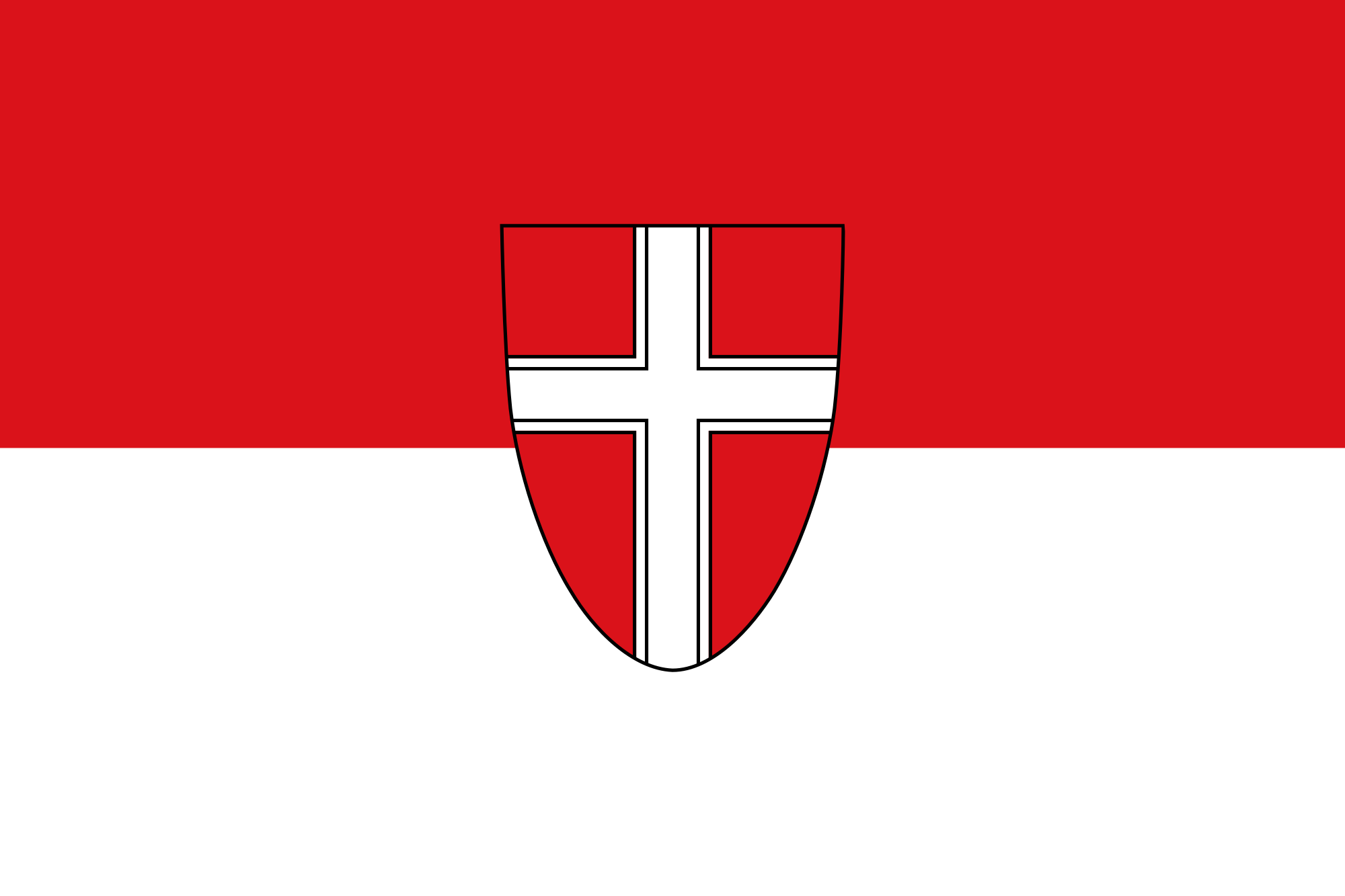 Vienna
Vienna

 Arturs Krišjānis Kariņš
Arturs Krišjānis Kariņš
 Belgium
Belgium
 Brazil
Brazil
 Charles Michel
Charles Michel
 Chile
Chile
 Emmanuel Macron
Emmanuel Macron

 European Union
European Union
 Gitanas Nausėda
Gitanas Nausėda
 Karl Nehammer
Karl Nehammer
 Klaus Johannis
Klaus Johannis
 Kyriakos Mitsotakis
Kyriakos Mitsotakis

 Madrid
Madrid
 Mark Rutte
Mark Rutte
 Mette Frederiksen
Mette Frederiksen
 Mexico
Mexico
 Nikolaj Denkow
Nikolaj Denkow
 Olaf Scholz
Olaf Scholz
 Austria
Austria

 Party and government
Party and government
 Pedro Sánchez
Pedro Sánchez
 Peru
Peru
 Petr Fiala
Petr Fiala
 Rio de Janeiro
Rio de Janeiro
 Spain
Spain
 Ulf Kristersson
Ulf Kristersson
 Ursula von der Leyen
Ursula von der Leyen
 Viktor Orbán
Viktor Orbán

 Vienna
Vienna
 Xavier Bettel
Xavier Bettel

 Belgium
Belgium
 Bulgaria
Bulgaria
 Denmark
Denmark
 Germany
Germany
 Estonia
Estonia
 Finland
Finland
 France
France
 Greece
Greece
 Ireland
Ireland
 Iceland
Iceland
 Israel
Israel
 Italy
Italy
 Croatia
Croatia
 Latvia
Latvia
 Lithuania
Lithuania
 Luxembourg
Luxembourg
 Malta
Malta
 Monaco
Monaco
 Montenegro
Montenegro
 Netherlands
Netherlands
 Nordmazedonien
Nordmazedonien
 Norwegen
Norwegen
 Austria
Austria
 Poland
Poland
 Portugal
Portugal
 Romania
Romania
 Russia
Russia
 San Marino
San Marino
 Sweden
Sweden
 Switzerland
Switzerland
 Serbia
Serbia
 Slovakia
Slovakia
 Slovenia
Slovenia
 Spain
Spain
 Czech Republic
Czech Republic
 Turkey
Turkey
 Ukraine
Ukraine
 Hungary
Hungary
 United Kingdom
United Kingdom

 Science and technology
Science and technology
 Cyprus
Cyprus

 Belgium
Belgium
 Germany
Germany
 Estonia
Estonia


 Financial
Financial
 Currency
Currency

 Financial
Financial
 *Germany economic data
*Germany economic data

 Financial
Financial
 *European Union economic data
*European Union economic data

 Financial
Financial
 *France economic data
*France economic data

 Financial
Financial
 *Italy economic data
*Italy economic data

 Financial
Financial
 Special Drawing Right
Special Drawing Right

 Financial
Financial
 *Brazil economic data
*Brazil economic data

 Financial
Financial
 *China economic data
*China economic data

 Financial
Financial
 *Russia economic data
*Russia economic data

 Financial
Financial
 *Indonesia economic data
*Indonesia economic data

 Financial
Financial
 *India economic data
*India economic data
 Finland
Finland
 France
France
 Greece
Greece
 Hartwährung/Strong Currency
Hartwährung/Strong Currency
 Ireland
Ireland
 Italy
Italy
 Latvia
Latvia
 Luxembourg
Luxembourg
 Malta
Malta
 Netherlands
Netherlands
 Austria
Austria
 Portugal
Portugal
 Slovakia
Slovakia
 Slovenia
Slovenia
 Spain
Spain
 Cyprus
Cyprus

 Belgium
Belgium
 Brazil
Brazil
 Denmark
Denmark
 Germany
Germany
 European Southern Observatory
European Southern Observatory
 Finland
Finland
 France
France
 Italy
Italy



 Aerospace
Aerospace
 Netherlands
Netherlands
 Austria
Austria
 Portugal
Portugal
 Sweden
Sweden
 Switzerland
Switzerland
 Spain
Spain
 Czech Republic
Czech Republic
 United Kingdom
United Kingdom

 Science and technology
Science and technology
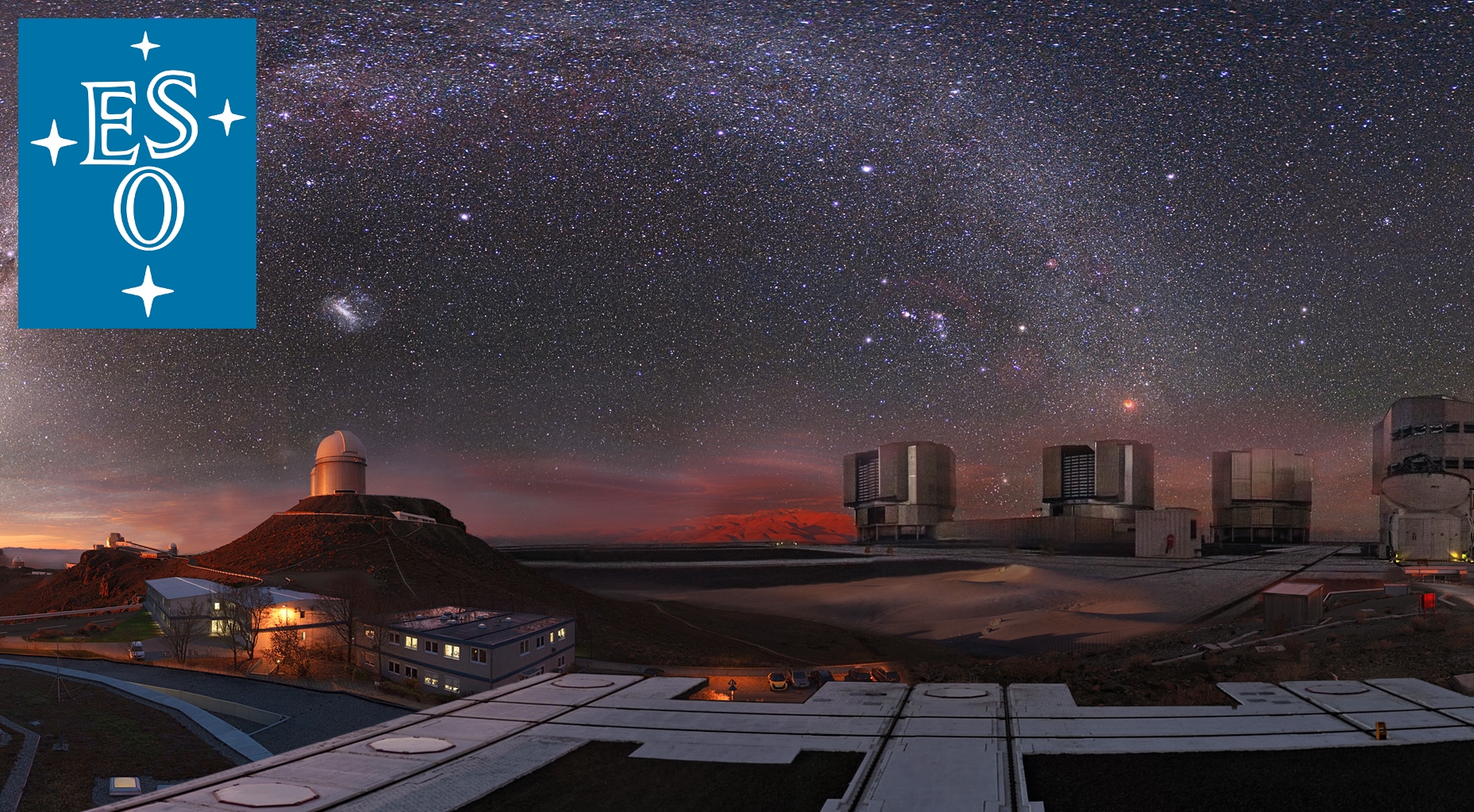
欧洲南方天文台 (The European Southern Observatory,ESO) 是为在南半球研究天文学,在政府间组织的一个研究机构,由15个国家组成和支援的一个天文研究组织。它成立于1962年,目的是为欧洲的天文学家提供先进的设施和捷径以研究南方的天空。这个组织的总部设在德国慕尼黑附近的加兴,雇用了约700名工作人员,每年并接受成员国约135亿欧元的经费[1]。
欧洲南方天文台建设和经营一些已知规模最大和技术最先进的望远镜,包括首创主动光学技术的新技术望远镜、和由4个8米等级的望远镜和4个1.8米辅助望远镜组成的甚大望远镜。目前由ESO进行的计划包括亚他加马大型毫米波阵列和欧洲极大望远镜。
ALMA是下一个十年最大的地面天文专案,将成为在毫米与次毫米波尺度下观测的主要新工具。他的建设正在进行中,预计于2013年完成。ALMA专案是欧洲各国、亚洲、北美洲和智利之间的国际合作计划。欧洲的执行权由ESO代表行使,并且还主持ALMA区域中心[2]。
E-ELT是40米等级的望远镜,目前还在细部设计阶段,将是世界上观测天空最大的巨眼。 欧洲极大望远镜,它将极有力的推动天文物理学的知识,能够仔细研究的天体,包括围绕着其它恒星的行星、宇宙中的第一个天体、超大质量黑洞、和主宰宇宙的暗 物质与暗能量的自然本质和分布。从2005年底,ESO就一直与工作和使用社群的欧洲天文学家和天文物理学家共同来定义此新的聚型望远镜[3]。
ESO的观测机构已经作出许多重大的天文发现和一些天体目录[4]。最近的研究结果包括发现最遥远的伽玛射线暴和我们的星系,银河系,中心有黑洞的证据。在2004年,甚大望远镜让天文学家获得第一张在173光年外环绕着的棕矮星的系外行星2M1207b轨道的绝佳影像。安装在ESO另一架望远镜上的仪器,高精度径向速度行星搜索器发现许多的系外行星,包括迄今发现最小的系外行星格利泽581c。甚大望远镜还发现了迄今距离人类最遥远星系的候选者阿贝尔1835 IR1916。
Die Europäische Organisation für astronomische Forschung in der südlichen Hemisphäre (englisch European Organisation for Astronomical Research in the Southern Hemisphere) oder in der Kurzform Europäische Südsternwarte (engl. European Southern Observatory, ESO) ist ein europäisches Forschungsinstitut, das Teleskope in Chile betreibt.
Die vielen Beobachtungseinrichtungen der ESO verhalfen der Astronomie zu zahlreichen Entdeckungen und produzierten einige astronomische Kataloge.
Unter anderen wurden an ESO-Observatorien der bis heute am weitesten entfernte Gammablitz beobachtet sowie Beweise für die Existenz eines Schwarzen Lochs im Zentrum unserer Milchstraße gefunden.
Die Zunahme der Expansionsgeschwindigkeit des Universums konnte basierend auf Beobachtungen weit entfernter Supernovae mit den Teleskopen auf La Silla gezeigt werden.[2]
Das Very Large Telescope (VLT, deutsch sehr großes Teleskop) konnte zum ersten Mal Kohlenmonoxid-Moleküle in einer Galaxie in einer Entfernung von etwa elf Milliarden Lichtjahren analysieren. Dies ermöglichte die Erlangung der präzisesten Messergebnisse der Temperatur für eine derart entfernte Epoche.[3]
Ebenso mit dem VLT konnten Astronomen das größte gemessene Alter eines Sterns in unserer Milchstraße bestimmen. Mit seinen 13,2 Milliarden Jahren wurde der Stern in einer der frühesten Phasen der Sternentstehung im Universum geboren.[4]
2004 konnte mit Hilfe des VLT das erste Bild eines extrasolaren Planeten (2M1207 b) aufgenommen werden. Seither konnten mit dem Spektrografen HARPS viele weitere extrasolare Planeten aufgespürt werden.
Nach in Summe über 1000 Beobachtungsnächten auf La Silla, die sich über 15 Jahre hin erstreckten, konnten die Bewegungsmuster von mehr als 14.000 sonnenähnlichen Sternen in Nachbarschaft der Sonne bestimmt werden. Es konnte somit gezeigt werden, dass unsere Heimatgalaxie ein turbulenteres und chaotischeres Leben durchmachte als zuvor angenommen wurde.[5]
ヨーロッパ南天天文台(ヨーロッパなんてんてんもんだい、European Southern Observatory、略称:ESO)は、ヨーロッパ14ヶ国およびブラジルが共同で運営する天文観測施設である。1964年に設立された。チリにある天文台を運営している。本部はミュンヘン近郊のGarchingにある。ラ・シヤ天文台(La Silla Observatory)、パラナル天文台(Paranal Observatory)、チャナントール天文台(Llano de Chajnantor Observatory)がおもな施設である。
The European Southern Observatory (ESO), formally the European Organisation for Astronomical Research in the Southern Hemisphere[2], is a 16-nation intergovernmental research organization for ground-based astronomy. Created in 1962, ESO has provided astronomers with state-of-the-art research facilities and access to the southern sky. The organisation employs about 730 staff members and receives annual member state contributions of approximately €162 million.[3] Its observatories are located in northern Chile.
ESO has built and operated some of the largest and most technologically advanced telescopes. These include the 3.6 m New Technology Telescope, an early pioneer in the use of active optics, and the Very Large Telescope (VLT), which consists of four individual 8.2 m telescopes and four smaller auxiliary telescopes which can all work together or separately. The Atacama Large Millimeter Array observes the universe in the millimetre and submillimetre wavelength ranges, and is the world's largest ground-based astronomy project to date. It was completed in March 2013 in an international collaboration by Europe (represented by ESO), North America, East Asia and Chile.[4][5]
Currently under construction is the Extremely Large Telescope. It will use a 39.3-metre-diameter segmented mirror, and become the world's largest optical reflecting telescope when operational in 2024. Its light-gathering power will allow detailed studies of planets around other stars, the first objects in the universe, supermassive black holes, and the nature and distribution of the dark matter and dark energy which dominate the universe.
ESO's observing facilities have made astronomical discoveries and produced several astronomical catalogues.[6] Its findings include the discovery of the most distant gamma-ray burst and evidence for a black hole at the centre of the Milky Way.[7][8] In 2004, the VLT allowed astronomers to obtain the first picture of an extrasolar planet (2M1207b) orbiting a brown dwarf 173 light-years away.[9] The High Accuracy Radial Velocity Planet Searcher (HARPS) instrument installed on the older ESO 3.6 m telescope led to the discovery of extrasolar planets, including Gliese 581c—one of the smallest planets seen outside the solar system.[10]
L’Observatoire européen austral (en anglais, European Southern Observatory : ESO), officiellement nommé l'Organisation européenne pour des observations astronomiques dans l’hémisphère austral1 (European Organisation for Astronomical Research in the Southern Hemisphere), est une organisation intergouvernementale pour l’astronomie fondée en 1962 par cinq pays européens, afin de créer un observatoire astronomique de pointe au sol dans l'hémisphère austral à disposition des astronomes.
L'ESO est l'acteur principal de l'astronomie observationnelle européenne. Il possède des télescopes allant de 2,2 à 8,20 mètres de diamètre, un parc d'une vingtaine d'instruments, dont 15 à Paranal, permettant des observations en imagerie, photométrie, spectroscopie, interférométrie dans à peu près toutes les longueurs d'onde allant du proche ultraviolet à l'infrarouge thermique (vers 20 microns). L'organisation possède également un système complet d'archivage des données, en partenariat avec l'agence de coordination entre l'Europe et le télescope spatial Hubble.
Son siège se trouve à Garching bei München près de Munich en Allemagne ; il dispose de bureaux au Chili à Vitacura dans la capitale Santiago du Chili. En 2018, l'organisation compte 16 états membres et trois sites d'observations, tous au Chili : l'Observatoire de La Silla, l'Observatoire du Cerro Paranal, où se trouve le Very Large Telescope, et l'Observatoire du Llano de Chajnantor.
L’Osservatorio Europeo Australe (ESO, dall'inglese European Southern Observatory, formalmente Organizzazione europea per la ricerca astronomica nell'emisfero australe) è un'organizzazione astronomica internazionale, di cui a settembre 2018 fanno parte sedici nazioni.[1] Creata nel 1962, l'ESO fornisce agli astronomi strumenti all'avanguardia e un accesso al cielo australe. L'organizzazione impiega circa 730 persone e riceve contributi annui di circa 143 milioni di Euro da parte degli Stati membri.[2]
ESO ha costruito e gestito alcuni dei più grandi e più avanzati telescopi del mondo, come il New Technology Telescope (NTT), il telescopio che lanciò la tecnologia dell'ottica attiva e il VLT (Very Large Telescope), composto da quattro telescopi principali (UT) con specchi primari di 8,2 metri di diametro e quattro telescopi ausiliari mobili (in inglese, Auxiliary Telescope, AT) di 1,8 metri di diametro. Ultimo progetto sviluppato da ESO è l'Atacama Large Millimeter Array (ALMA), mentre in fase di sviluppo si trova l'European Extremely Large Telescope (E-ELT).
Atacama Large Millimeter Array (ALMA) è un osservatorio rivoluzionario per l'osservazione dell'universo nelle radiazioni millimetriche/submillimetriche ed è attualmente il più grande progetto astronomico da terra. La sua costruzione è stata completata nel 2013. Il progetto ALMA è una collaborazione internazionale tra l'Europa (rappresentata da ESO), il sud est asiatico, l'America del Nord e la Repubblica del Cile.[3][4]
Uno dei più ambiziosi progetti di ESO è l'E-ELT (che sta per European Extremely Large Telescope), un telescopio di 39 metri di diametro, basato su un design innovativo con 5 specchi. Una volta costruito l'E-ELT sarà il più grande telescopio ottico/infrarosso al mondo. ESO ha cominciato la fase di design di questo telescopio all'inizio del 2006, con lo scopo di essere pronti a costruirlo nel 2014.[5] L'E-ELT dovrebbe essere pronto nel 2025. La grande capacità di accumulare la luce dell'E-ELT permetterà studi dettagliati di pianeti attorno ad altre stelle, dei primi oggetti dell'universo, di buchi neri supermassicci e della natura e della distribuzione della materia e dell'energia oscura che dominano l'universo.
I numerosi strumenti di osservazione di ESO hanno permesso molte scoperte astronomiche e prodotto diversi cataloghi astronomici.[6] Tra le più recenti scoperte: il più distante lampo gamma e il buco nero al centro della nostra galassia, la Via Lattea.[7][8] Nel 2004 il VLT ha dato agli astronomi la possibilità di ottenere la prima foto di un pianeta extra-solare, 2M1207b, che orbita attorno ad una nana bruna distante 173 anni-luce.[9] Lo spettrografo HARPS ha permesso la scoperta di molti altri pianeti extra-solari, incluso un pianeta 5 volte più pesante della Terra che orbita attorno ad una nana rossa, chiamato Gliese 581c.[10] Il VLT ha anche scoperto la galassia più lontana mai vista dall'uomo, Abell 1835 IR1916.
La Organización Europea para la Investigación Astronómica en el Hemisferio Austral (en inglés European Organisation for Astronomical Research in the Southern Hemisphere o European Southern Observatory), más conocida como el Observatorio Europeo Austral o Del Sur es una organización astronómica intergubernamental creada en el año 1962, dedicada a la astrofísica y al desarrollo y operación de telescopios en la Zona Norte de Chile.
Sus oficinas centrales están en Garching, cerca de Múnich, Alemania, y además cuenta con una oficina en Santiago, Chile.
Uno de los proyectos más destacados del ESO es el Telescopio Europeo Extremadamente Grande, la propuesta para la nueva generación de telescopios ópticos terrestres.
Европейская южная обсерватория, (англ. ESO, European Southern Observatory, официальное название — Европейская организация астрономических исследований в Южном полушарии) — международная исследовательская организация, членами которой являются 15 европейских государств и Бразилия.
Идея создания объединённой европейской обсерватории появилась в Лейденской обсерватории в Нидерландах весной 1953 года у Вальтера Бааде и Яна Оорта. 21 июня того же года Оорт собрал группу астрономов в Лейдене, чтобы обсудить возможность её создания. Позднее этот вопрос был поднят на Гронингской конференции, также проводившейся в Нидерландах. 26 января 1954 года декларация ESO была подписана ведущими астрономами шести европейских стран за создание совместной европейской обсерватории в южном полушарии.[1]
Выбор южного полушария был обоснован тем, что все крупные рефлекторные телескопы на тот момент находились в северном полушарии. Кроме того, многие объекты, такие как центральная часть Млечного Пути и Магеллановы облака, доступны только из южного полушария. Изначально планировалось, что телескопы будут располагаться в Южной Африке, однако в ходе наблюдений выяснилось, что условия в Южных Андах более предпочтительны, и 15 ноября 1963 года местом расположения обсерватории была выбрана Республика Чили.[2]
До принятия этого решения 5 октября 1962 года Бельгией, Германией, Францией, Нидерландами и Швецией была подписана Конвенция ESO, а на должность генерального директора был назначен Отто Хекман.
Первые телескопы ESO, расположенные в Ла-Силье, начали работать в 1966 году.[1] В 1980 году штаб-квартира европейского департамента ESO была перенесена в Гархинг под Мюнхеном, Германия.
 Architecture
Architecture
 Music
Music
 Performing Arts
Performing Arts
 Hand in Hand
Hand in Hand
 International cities
International cities
 Burgenland
Burgenland
 Sport
Sport
 Tyrol
Tyrol
 Geography
Geography
 Astronomy
Astronomy